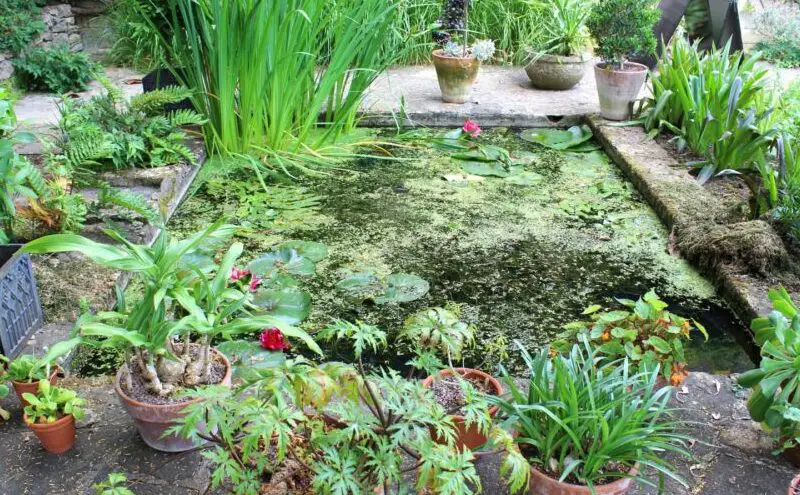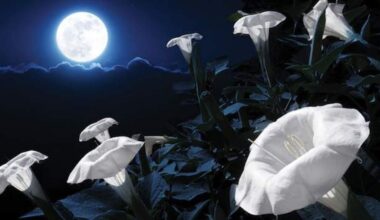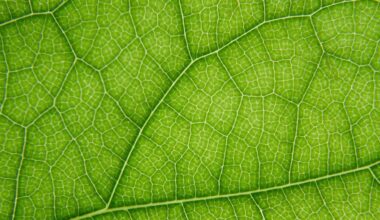In a small corner of land, it is interesting to let nature do its thing. A kind of natural nursery where the biodiversity of flowers and plants can occupy a small plot. Plants that grow spontaneously are wonderful indicators of the nature of the soil.
We present you 10 wild plants growing in a wet environment, then also 10 plants in a dry environment.
Contents
10 Plants that do well in wet soil
Symphytum officinalis
It enriches the compost with nitrogen. Rich in nectar, it attracts butterflies, bees, bumblebees…
Dysenteric Pulicaria (Pulicaria dycenterica)
The leaves have an unpleasant acre odor so cattle do not eat them. It is called flea grass because it keeps them away from the doghouse.
Acanthus Thistle (Cardus acanthoides)
This thistle attracts butterflies, bumblebees, bees and goldfinches…
Barber’s-brush (Dipsacus fullonum ou syvestris)
Dipsacus comes from the Greek “dipsaô”, “I am thirsty”, in reference to the water troughs that supply water to birds in times of drought.
Wild sedge (Carex sylvatica)
Sedges facilitate the maintenance of banks and watercourses. They filter pollutants.
Fireweed with large flowers (Epilobium angustifolium)
Called fire plant because it is the first plant to appear after a fire. Its young shoots are edible raw or cooked. It is made into tea once the leaves have dried.
Meadows queen (filipendula Ulmaria)
The meadowsweet is as rich in salicylic acid as the willow from which aspirin is derived. The flowers are used fresh or dry in the kitchen to perfume desserts in moderation because it releases a powerful perfume.
Roseau (Phragmites australis)
Reeds are used to make roofs, brooms, wind breaks. A reedbed oxygenates stagnant water.
It fries the water of the purification stations. It shelters the birds and in particular the russetbirds. The reed is considered invasive when it colonizes waterways.
Eupatorium with hemp leaves (Eupatorium canabinum)
Frequent in the gardens of parish priests, its fresh leaves accelerate the healing of wounds and bruises. Animals injured in the wild would come to rub it to heal themselves.
Bluish Bramble (Rubus caesius)
Brambles protect the young shoots of other plants from deer.
10 Plants that are drought tolerant
Callistemons laevis
These shrubs are called “bottle rinsers” because of their swab-like floral spikes. This Callistemon is the one that blooms the longest, in successive waves. These original flowers, bright red, give it a lot of personality.
Cistus
Species growing most often on the Mediterranean rim, it loves dry (usually siliceous but also calcareous) and sunny soils. Moreover they are pyrophytes, having the particularity of regenerating easily and even multiplying after fires.
Convolvulus cneorum
Bushy, dense and rounded shrub. From late spring to late summer, white flowers with yellow center, from pink buds. Silvery, narrow and silky evergreen leaves.
Coronilla emerus
Compact shrub, with leaves composed of numerous leaflets, bearing pale yellow flowers, marked with reddish brown, followed by fruits in pods. Interesting for its light foliage.
Elaeagnus ebbingei Compacta
Vigorous shrub with tough evergreen evergreen leaves dark green with gray underside with fast growth and small white flowers very fragrant in autumn.
Eriobotrya japonica
Like any orangery plant, the medlar of Japan will be cultivated in tub or in sheltered situation in a garden of mild climate. Its long shiny green evergreen leaves, its autumnal bloom and its spring fructification make it particularly interesting to decorate a garden.
Note that its fragrant flowers are sensitive to frost and do not tolerate temperatures below -3°C. Attention, the juicy and acidulous fruits must be picked ripe to be edible.
Euphorbia
The spurge Characias is surely one of the most amazing species with its green inflorescences. Its vigorous branches are erect and covered with elongated bluish-green leaves. Flowering takes place from March to June, they are large cylindrical inflorescences green-yellow with brown nectar glands.
Grevillea rosmarinifolia
Shrub with the persistent and dense foliage of Australian origin, appreciated for its long flowering carmine red and its relative hardiness. The touch is silky unlike Grevillea juniperiana.
Myrtus communis Tarentina
Small shrub with dense and evergreen foliage reminiscent of boxwood but very pleasantly aromatic. Many small white flowers follow one another in summer.
Pennisetum alopecurioides / Little Bunny
This dwarf variety has narrow, glaucous leaves gathered in a perennial, upright tuft. Its bloom is composed of very compact and decorative beige cylindrical spikes.
How to grow indoor plants in water?
Aquaculture, or hydroculture, is a horticultural technique that is oriented towards soil-less cultivation, a way of cultivating plants without soil, directly in water added to a nutrient solution. It is a very practical technique that requires almost no watering, low maintenance, no messy handling of soil or potting soil, and less risk of disease (without soil that can rot).
You can choose to move a plant from the ground to a pot filled with water, or simply select a shoot or reject of that plant and cut it. For example, you cut a branch from your house plant and insert it into a container of water. After a few weeks, the roots will appear. Then you can choose to replant it in an earthen pot or grow it in water.
To successfully grow plants in water, you can use tap water or mineral water at room temperature and add it to a specific liquid fertilizer for hydroculture.
Thanks to this cultivation technique, you will see the plants grow only in water. Thus, you will be able to observe the beauty of the plants growing, see a nucleus develop, the roots spread in the water and observe the leaves grow.
Which houseplants to grow in water?
Many of the green plants found in apartments can be grown in water, such as :
- Anthurium,
- Aréquier,
- Dracaena,
- Aspidistra,
- Dieffenbachia,
- Ficus,
- Kentia,
- Kalanchoe,
- Ivy,
- Philodendron,
- Phalaenopsis
- Schefflera,
- Poinsettia,
- Sansevieria,
- Yucca.
To make a success of your aqua-culture, you can use a specific vase or insert your plants in a glass container filled with water.









